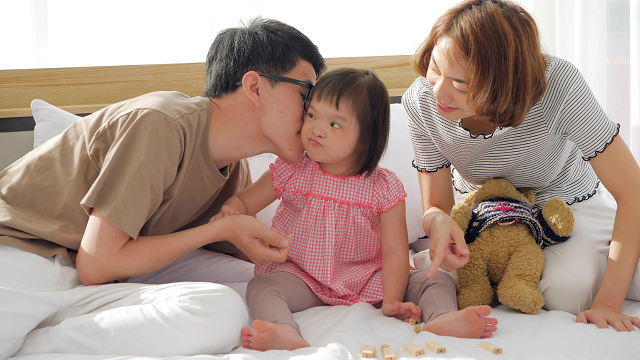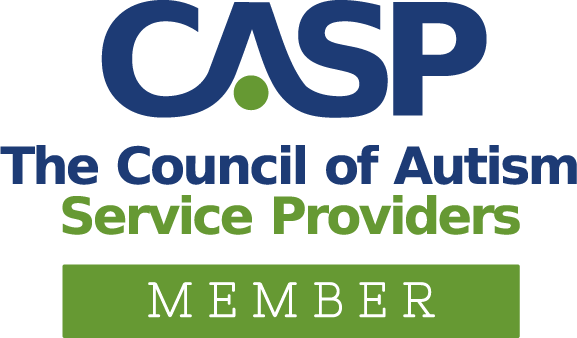Are you parenting a child with autism? If so, you probably know that Autism Spectrum Disorder (ASD) is a lifelong chronic condition. However, there are always ways to make progress when raising an autistic child so that they can live a full, productive, and independent life. The 12 steps outlined in this article will clarify the best way to help and support your child with autism.
1. You Don’t Have to Wait for a Diagnosis!
When you’re parenting a child with autism or other related developmental delays, the most imperative and essential thing you can do is begin treatment early. Early intervention with Applied Behavior Analysis (ABA) therapy can begin as early as 18 months old. Seek out help and research developmental milestones as soon as you suspect something is wrong. It’s vital to be proactive and solution-oriented instead of waiting for the child to outgrow the problem.
It may be beneficial to start treatment without a diagnosis in some cases because research shows that the sooner a child receives intervention for autism, the greater the developmental outcome. Keep in mind that insurance companies typically require an official diagnosis before they will cover treatment through ABA therapy. Early intervention is the most effective means of speeding up your child’s development, making progress, and reducing the symptoms of autism over their lifespan.
If your child is formally diagnosed with autism, realize that you are now more equipped to make a better life for them. The more you can learn about autism, the better you’ll be able to make treatment choices, ask the right questions, and get involved.
Become the leading expert on your child’s autism. Learn their triggers and what brings them happiness. Figure out what makes your child feel:
- Anxious
- Scared
- Uncomfortable
- Overstimulated
- Soothed
Learning variables and influences can help you prevent unwanted behaviors and inform your provider about your child’s history.
2. Accept Your Child as Is, Challenging Behaviors and All
Practice acceptance instead of focusing on how your neurodivergent child is different from neurotypical children. Realize your child is unique, but there is nothing inherently “wrong” or “missing.” Enjoy your child’s individuality and quirks. Celebrate ALL success and leave judgment at the door. Consider beginning a gratitude practice. Demonstrating unconditional love and acceptance toward your child will help you and them in so many ways.
3. Never Give Up
You can’t predict what your child will overcome or what behaviors will last a lifetime. Do everything you can not to jump to conclusions about what life as an autistic child will be like. Instead, stay present. Like everyone else, individuals on the autism spectrum have their entire lives to grow, flourish, and overcome obstacles.
4. Provide Your Child with Structure and Safety
As we mentioned, learning all you can about autism and getting involved in your child’s treatment will expand your ability to help and “hold space” for them. Holding space means focusing on someone and supporting them in their feelings without judgment. Consistency is vital here. Children with autism sometimes have difficulty applying what they’ve learned in treatment, such as ABA therapy, to settings outside of therapy. Transferring skills takes hard work and practice. Creating consistency for your child is the top way to reinforce their learning. Observe your child’s therapist and adapt their techniques in home life. Try learning in new environments to encourage them to use new skills everywhere. Remaining consistent is especially important during challenging behaviors.
5. Stick to the Routine
Children with autism tend to flourish when they have a highly-structured schedule and routine. Again, this touches on the consistency they require to have a sense of wellbeing. Create a plan for your child with regular mealtimes, school activities, therapy, and prep for bedtime. Try to keep breaks in routine to a minimum. If there is a necessary schedule change, prepare the child for it ahead of time with a social story or explanation of what to expect.
6. Reward the Behavior You Want to See
Positive reinforcement goes a long way in parenting a child with autism, so go out of your way to “catch” them engaged appropriately and reward that! Use loving praise when they exhibit a behavior that promotes learning or relaxation. Simply offering them recognition like stickers or extra time doing their favorite activities helps them feel more inclined to engage in the behavior again.
7. Create Safe Spaces for Your Child
Create a private, safe space in your home where your child can decompress, destimulate, relax, feel secure, and be safe. This may involve setting boundaries for when this space can be accessible so that it remains exceptional and only available some of the time. For some families, it will be necessary to safety-proof your entire house if your child engages in tantrums or self-injury.
8. Find Nonspeaking Methods of Communication
Connecting with your autistic child can be complex and sometimes difficult, but dialogue between you and your child isn’t everything. Talking to them or even a slight touch can deliver a message and create a bond. The way you look at your child, your body language, and your tone of voice are all methods of communication. Your child communicates back, even if they never speak. It’s all about learning their language.
Watch for nonverbal cues such as sounds, facial expressions, and gestures. You can learn to pick up on nonverbal cues from your autistic child through observation and awareness. Nonverbal behavior is especially likely when children with autism are tired, hungry, or desire something.
9. Try to Determine the Function of Your Autistic Child’s Behavior
It is natural to feel upset when you don’t get what you want, but often tantrums can be the result when autistic children don’t feel heard or understood. Remember, a tantrum is a form of communication and a way of getting your attention. Try to understand the reason for a tantrum or other behavior without reacting impulsively.
10. Make Having Fun a Priority
A child with autism is still a child. There needs to be more to their lives than just therapy and drills for both parents and children. Try to schedule playtime when your child is most awake, alert, and feeling positive. Find ways to have fun together by considering what makes them smile, laugh, or feel extroverted. Take a break from therapeutic and educational activities. Sometimes a kid needs to be a kid, and your company alone is rewarding. Create unpressured time with family. Remember, play is an essential component of learning, and with the proper therapist, learning should never feel like work.
11. Pay Attention to Your Autistic Child’s Sensory Issues
Many autistic children are hypersensitive to sound, touch, light, taste, and even smell. Contrastingly other children with autism are under-sensitive to stimuli like temperature and pain.
Understanding and accommodating sensory issues can help with discomfort and improve your autistic child’s ability to learn, interact, and communicate. Accommodation may mean changing the environment, using tools and strategies, or creating new habits or routines. For example, some parents create a small den-type space with minimal or no sensory input, such as a pop-up tent or a “fort” behind the couch.
Because sensory needs are dependent on the environment, accommodations might have to be tailored for each environment. You can create a travel sensory toolkit, which might be a bag with sensory tools and toys that help calm or stimulate your child’s nervous system.
12. Find Support and Ask for Help
Parenting a child with autism takes a lot of energy and time. There will be times when you will feel stressed, overwhelmed, or discouraged. Parenting isn’t easy for anyone, and raising a child with autism is even more challenging. To be at your parenting best, you must take care of yourself. Delegate tasks whenever possible.
Find autism support groups in your area. Being around others experiencing the same things can be helpful and provide you with insights. Ask your therapy providers about respite hours or look into resources for getting additional services. Take time doing the things you enjoy! Remember the airplane analogy when thinking about self-care: put your oxygen mask on first before placing your child’s mask.
Parenting a Child with Autism and ABA Therapy
Autism is not something you outgrow. It is essential to select a treatment as early as possible, such as ABA therapy, that can help your child gain new skills and overcome developmental impairments. Keep in mind that as a parent with a child on the autism spectrum, you have options. From free government services to in-home ABA therapy, programs exist to support your child and help them thrive!
ABA Centers of America can provide individualized, evidence-based autism treatment focused on learning and gaining skills for independence. Remember, early intervention increases the likelihood of better developmental outcomes, so do not hesitate to call. There is no waiting list, and treatment can begin immediately. Call us at 844-923-4222 for a free, no-obligation consultation. Or contact us for more info.







